

To help you in your quest to become the very best (like no one ever was) in Super Smash Bros., we've compiled a handy list of tips and character strategies, as well as a guide for unlocking all of the hidden characters and stages. Enjoy, and make sure to do your duty and taunt someone with Duck Hunt Dog after you win.
Don't Neglect Your Normal Attacks: It's tempting to run around and use Smash attacks on everything on sight. However, most Smashes have a comparatively long wind-up and cooldown, so you're often better using normal attacks. Get good at moving around and racking up damage, then deliver the coup de grace with a well-placed Smash.
You Don't Always Have to Finish with a Smash: Smash attacks are great, but they aren't 100 percent necessary for finishing off an opponent. Moves like Pikachu's Thunder, Mega Man's Air Shooter, and Charizard's Flare Blitz are all capable of defeating an opponent in different ways.
Get Comfortable with Shielding and Dodging: The L and R shoulder buttons on the Nintendo 3DS activate the shield, which is invaluable for blocking enemy attacks and countering. Be careful though, because a mistimed air dodge will leave you very vulnerable. Anticipate your opponent's action and react appropriate.
Use the Stage to Your Advantage: The edge of the screen can vary from stage to stage. Pikachu, for example, is very dangerous in Tomodachi Life due to the low ceiling, while characters with strong side smashes can dominate the Living Room due to the lack of a true pit pushing the action close to the side boundaries.
Grabs Build Momentum: Get good at working in grabs. They do damage and build momentum by throwing your opponent off-balance. Some are even capable of outright KO'ing an opponent.
How to Use: Since you're in control of these custom characters' moves, it's up to you to determine the best way to use them effectively. Keep in mind the three roles available essentially act as basic templates for characters you may already be familiar with, so you may want to stick with the kind of fighter you know best. For example, If you like, say, Link, obviously, the Swordfighter may bring you the best results, and the Gunner could work out for you if you're a fan of Mega Man. Assign different moves, then visit the Practice mode to see if your spread of abilities covers all of the situations your character may find him or herself in.
Smash Attack: A powerful knockout move executed by tapping the analog stick to the up, down, or the side while hitting the A button.
Meteor: A downward aerial strike capable of knocking a character into a pit with no chance of recovery. Used when an opponent is trying to return to the stage after being launched.
Edge Guarding: A strategy in which one character will attempt to guard the edge of the stage and prevent an opponent from recovering.
Spike: A move that knocks an opponent down hard and stuns them.
Sweet Spot: The spot on a character's hitbox that will produce the strongest knockback. Sometimes accompanied by a distinct "ping" sound after connecting.
Chain Grab: A technique in Smash Bros. that consists of grabbing a character, throwing them, and grabbing them again before they can recover. King Dedede is a well-known chain grabber from Super Smash Bros. Brawl.
How to Use: Charizard has changed a great deal from Super Smash Bros. Brawl. It's still somewhat slow and unwieldy, but Flare Blitz (Side + B) hits like a mack track. Just be careful when you use it, because you may also end up flying off the screen. Charizard's smash attacks are equally powerful. Fly (Up + B) is a great knockout move, but be careful because you will be vulnerable if you miss. If you grab an opponent, push down to have Charizard breathe fire on them for major damage.
How to Use: Peach is much stronger in this version of Super Smash Bros. than in Brawl. Almost all of her attacks have been improved in some way, making her a dangerous all-rounder with powerful finishing moves. She also retains her ability to glide, making it comparatively easy for her to get back to the stage after being knocked out. Her Side Smash is now arguably her best finishing move, dealing a devastating amount of damage and knockback. If your opponent is controlling Peach, be prepared for a tough fight.
How to Use: Robin is a terrifying strong character who can hurt you in a lot of different ways. His/her Elfire attack (Side + A) creates a pillar of flame that does a lot of damage and even a bit of knockback, while his/her Thoron can KO multiple foes at once with one hit. If Robin manages to get hold of you with Nosferatu (Down + B), he/she can drain your life and restore their own. Robin is a great all-around character who is a force to be reckoned using both projectiles and regular melee attacks.
How to Use: Like many other Smash Bros. alumni, Link is much stronger in this version, gaining a lunging sword attack among other useful tools. His downward stab (Aerial Down + A) is now much less powerful than it used to be, not to mention slower, but his Downward Smash deals decent damage, and his upward stab (Aerial Up + A) can finish off opponents that have already been launched. In general, harrass foes with projectiles at a distance, then make their life difficult with his Upward Smash and spin attack (Up + B). If they have been launched and are coming back to the stage, catch them in the air with a leaping spin attack (Aerial Up + B) for a KO. Link's Hookshot can be used to grab a ledge in a pinch.
How to Use: Little Mac is fast, powerful, and lanky, though it may take you some time to get used to how fast he zips around the screen. While you're limited to only using melee attacks, some of his special moves, like the Jolt Haymaker (Side + B) can help him attack distant enemies by lunging across the screen. Little Mac also comes with a "power meter," located above his picture on the bottom screen. Fill this up, and you can unleash a devastating attack with the B button—but just like the neutral B button move, it takes a little time to charge up. As long as you keep him out of the air as much as possible, you shouldn't have many problems controlling this Punch-Out star.
How to Use: Wario's mostly as you remember him: A slow-but-strong character with a bit of versatility to his moveset. His Wario Waft attack is an extremely powerful move, but it can only be used sparingly, seeing as it takes nearly 2 minutes to passively charge to its greatest strength. Use his motorcycle attack (Side + B) to travel quickly from one end of the stage to another, and remember, you can use the bike afterwards as a projectile, or eat it by pressing B to get a tiny boost in health. Wario's Corkscrew attack is similar to Toon Link's Spin Attack, in that if you use it successfully, you'll pull off several hits.
How to Use: Mario hasn't changed much over the years, and he's still an incredibly well-rounded character, with abilities for fighting enemies both near and far. His Super Jump Punch (Up + B) works as an effective way to knock enemies around, and chucking fireballs (B) serves as an excellent strategy to damage approaching opponents. Mario's FLUDD attack (Down + B) works well to push his enemies off of ledges, but remember you have to press B again to unleash this torrent of water.
How to Use: If you've been playing as Mario, know that Dr. Mario doesn't differ much, so you can use many of the same strategies. A Tornado similar to Luigi's replaces his FLUDD move, and his projectile attack now takes the form of pills instead of fireballs. Think of Dr. Mario as the Falco to regular Mario's Fox McCloud.
How to Use: Duck Hunt is actually a combination of three characters: the dog, a duck, and an offscreen hunter, who's decided it's open season on every other Nintendo character. That said, his projectiles work a bit different than most: Launch an explosive can into the air with B, then keep hitting the B button to bounce it through the air and hit your opponent (if necessary). Throwing a clay pigeon with Side + B works similarly, though if you have the hunter fire when the clay pigeon crosses over an opponent, they'll take plenty of damage. And, since your smash attacks are backed up by gunfire, charging them to their full potential gives them an impressive amount of range.
How to Use:Bowser Jr. and his Clowncopter add up to a pretty hefty character, but thankfully, he has some helpful moves to help overcome his slowness. The Koopa Kart (Side + B) attack can bring you closer to enemies quickly, and his Up + B sends him rocketing into the air, while explodinghis Clowncopter below. (Don't worry, he has plenty to spare.) And, like many other characters, Koopa Jr. has a charged projectile attack (B) that can help you cause some damage to incoming attackers—just be sure you're not open to any attacks while charging it up.
How to Use: Kirby's central gimmick still remains, suck in an enemy with B, swallow them by hitting Down, and you'll steal a move from you enemy you can activate by hitting B. But he's a strong fighter outside of his copy ability, and his Stone move (Down + B) provides an excellent chance to do massive damage from above, since Kirby falls quickly. A fully-charged Hammer Flip (Side + B) can do 30% or greater damage, and even though the charging process leaves Kirby defenseless, he can at least crawl around while it's happening. His Flying Cutter (Up + B) also makes for a very effective uppercut move—just make sure there's land underneath Kirby before he comes crashing down.
How to Use: The Animal Crossing Villager doesn't have many long-range attacks, so prepare to fight your opponents up close and personal. But there's one way around this: Using the Pocket move (B), the Villager can snatch ranged attacks or thrown items, and store them away for later use. The Timber move (Down + B) is especially powerful, though you'll have to perform this move a few times before it's actually effective. The first time you hit Down + B, the Villager will plant a seed, and the second Down + B will water it (and this stream can push opponents away). Following this, as long as the grown tree remains on the screen, the Villager can swing a mighty Axe by hitting Down + B. If you can spare the time to set up this move, it can definitely work in your favor.
How to Use: Dedede is huge and powerful, but also a large target, and his moves tend to be slow and require some charging. That said, he's able to fly, which can give him four extra boosts into the air after leaving the ground. If you can suck up your opponents with his Inhale move (B), you can spit them off to the side of the stage and prep a Smash move as they attempt to make it back to safety. Even if his Smash moves and the Jet Hammer require a bit of wind-up, Dedede has a lot of range with his hammer, so you can always sneak some hits in against opponents who are too busy fighting each other to keep an eye on Kirby's nemesis.
How to Use: Like Yoshi, Diddy focuses on speed instead of strength. His moves are designed to send him flying around the screen, which can definitely work to your advantage as long as you keep his movements under control. Some of his most popular moves, like the Peanut Popgun (B) and the Rocketbarrel Boost (Up + B) take a bit of charging before they can reach their full destructive potential, so be sure you give yourself enough of an opening before you unleash these attacks. With the Popgun, be sure to release the button just as the gun starts shaking, or it'll blow up in Diddy's face.
How to Use: Most of Toon Link's special attacks rely on projectiles like bombs, arrows, and his trusty boomerang, so you'll have plenty of options for attacking foes from a distance (though you'll need good aim). His Spin Attack (Up + B) can be an amazing finisher, provided you're given enough time to charge it up to its full potential. And, while he might not have the greatest reach, his Smash moves can cause some major damage to any opponents they hit. And if you need to cover a lot of ground, a double-jump follow by a Spin Attack lets Toon Link fly an impressive distance through the sky.
How to Use: As with past Smash games, Yoshi isn't the most powerful fighter, but he's fast and slippery, which can make him extremely annoying to your opponents—if you know how to use him right. His Egg Roll (Side + B) is capable of landing multiple hits, though it's a little hard to control, and may send you into a pit if you're not careful. Capturing enemies with the Egg Lay attack (B) is a great way to set them up for devastating attacks.
How to Use: Palutena isn't extremely powerful, but she is versatile in terms of defense, and her Smash attacks have a lot of reach. Her warp move (Up + B) allows her to gain altitude while avoiding the attacks of enemies, and her barrier move (Side + B) can make short work of your opponents' projectile attacks. And her blue beam move detailed above can blast through the bottom of platforms while keeping her below, so it's a great way to sneak some extra damage from unsuspecting foes.
How to Use: Fire Breath (B) works well from a distance for gradually wearing down your opponents' HP, but stick to using short bursts, since Bowser is big and slow, and you may need to make a tactical retreat. The Bowser Bomb (Down + B) is best used from the air, and does a huge amount of damage to unsuspecting enemies. His Flying Slam (Side + B) also does a lot of damage, but keep in mind you have to be really close to pull it off, and Bowser makes for a huge target.
How to Use: Falcon Punch! You'll be hearing those words a lot when Captain Falcon is on the screen. His signature attack is stronger than ever, hitting hard and gaining increased distance. Captain Falcon is one of those characters that boasts both speed and power, making him a real pain to deal with. Watch out for his Knee Smash (Aerial Side + A), but if he connects with it properly, you will be flying a long, long way.
How to Use: A speedster who requires a fair degree of finesse, but is nevertheless quite powerful in the right hands. Greninja's jab combo (A) has good priority and damage, while Water Arc (Up + A Smash) finishes off opponents coming from above. It really helps to master Substitute (Down +B), which is Greninja's strongest knockout move if it manages to connect. Hold Side + B and watch the shadow on the ground to teleport across the screen for a powerful kick attack. Make sure to keep moving because Greninja won't be able to stand toe-to-toe with the game's heavier hitters.
How to Use: Sheik has picked up a few moves, but she remains basically the same as she was in Super Smash Bros. Brawl, which is to say that she's fast with a strong aerial game. If they go up in the air, you will have the advantage with a variety of normal kicks. On the ground, use your speed and combo ability with normal A moves to rack up damage before finishing with a downward or upward smash attach.
How to Use: Zero Suit Samus wasn't a particularly common sight in Super Smash Bros. Brawl; but now that she's a separate character, she's apt to be seen quite a bit more. Like Sheik, Zero Suit Samus is a speedy character who relies heavily on her aerial game, which is where she does the majority of her damage. She also has a projectile, which is limited in range but can stun foes. On the ground, she's fast enough that she can typically build up damage quickly, finishing foes with a Backward Kick (Aerial Back + A) or a Plasma Whip (Upward Smash)
How to Use: No longer able to transform into Sheik, Zelda now stands on her own as a dangerous ranged character. Din's Fire (Side + B) has a more powerful explosion, and in place of the Sheik transformation she can now summon a Phantom who will slash the air for her (Down + B). Mostly, Zelda will stay outside of the fray, using the Phantom to escape and otherwise harrassing opponents with Din's Fire until it comes time for her to knock them out with a Lightning Kick (Aerial Back + A) or Halo Swirl (Upward Smash).
How to Use: Marth is much the same as he was in Super Smash Bros. Melee, which is to say that he is a fast and formidable sword fighter. His Side + B strings together a strong combo that does good damage with solid priority, while his Side Smash is useful for pressuring foes with quick, powerful hits. His aerial game is one of the best around, with his downward slash being very useful for knocking enemies straight down and off the stage. Marth's Shield Breaker attack (Hold B) is noticeably stronger in this version, and is now his most reliable KO move. Note: Lucina is a clone of Marth and should be treated accordingly.
How to Use: Luigi is faster now, and he's gained the ability to wall jump, but he's still floaty and oddly difficult to control... much like in the games from which he hails. Luigi struggles to get close to foes and will struggle against faster opponents with good reach like Marth. His Smash attacks are average, but Super Jump Punch will reliably KO opponents past 50 percent damage if it connects properly. If you're knocked off the stage as Luigi, Green Missile (Forward + Charge B) will help you get back in conjunction with his Super Jump Punch.
How to Use: Donkey Kong is much the same as he was in Smash Bros. Brawl, but he's now both faster and heavier, making him a bit more of a handful to deal with. His dash attack is now a roll like the one in Donkey Kong Country. Being so big, Donkey Kong can generally hold the middle of the stage and force opponents to come to him, at which point he can punish with his Upward Smash and Forward Smash. If an opponent is in the air, charge up his Giant Punch (Press B and wait) and use it at the right moment for a devastating knockout blow.
How to Use: Slender's on-again, off-again girlfriend joins the Smash Bros. cast with a unique fighting style based on Yoga. The practical effect is that she's quite fast, but that it's surprisingly hard to connect with her attacks, including her most reliable KO move: Tree Yoga (Upward Smash). She does come with two solid projectile attacks though-a soccer ball (Side + B) and an energy blast that be charged and saved (B). Use Wii Fit Trainer's mobility to your advantage and keep moving, harrassing them with projectile attacks and her decent aerial game.
How to Use: Fox isn't as fast as in previous versions of Smash Bros., and his aerial game has definitely taken a hit, but he's still a highly effective character. His Bicycle Kick (Upward Smash) and Aerial Kick (Aerial Back + A) are devastating attacks, and his blaster does a high rate of damage very quickly. In the hands of an experienced player, Fox remains a dangerous opponent, particularly in the air.
How to Use: Pikachu is weaker in some ways than in Brawl, but it remains as fast and annoying as ever, making it somewhat hard to deal with. Thunder continues to be Pikachu's go-to attack, doing a large amount of damage and potentially sending opponents off the top of the screen if used properly. Pikachu's Downward Smash is useful when surrounded, and its Flip Kick (Upward Smash) is still quite capable of finishing off opponents. Keep moving though, because even at less than 100 percent, Pikachu can still end up flying off the screen like the electrical rat it is.
How to Use: Pac-Man has a lot of different moves at his disposal, one of his most interesting ones being the Bonus Fruit attack (B). Activating this move causes Pac-Man to cycle through various projectiles, and pressing B again will launch the one he's currently holding in his hand. Each one has its own movement pattern and damage, so experiment in training mode so you know the right fruit for the occasion. In addition, Pac-Man can use the platform he creates with his Pac-Jump three times before it disappears entirely, so use this move to escape to the sky if the action below gets too rough.
How to Use: R.O.B. can be a surprisingly hard character to deal with, able to deal substantial damage with both projectiles and aerial attacks. In addition to being faster than before, he's also quite difficult to knock out of the stage at times. His eye beams due a surprising amount of damage, but require a moment to recharge after being used. Finish opponents with his Upward Smash.
How to Use: Shulk can be a bit of a tricky fighter, since his main gimmick can be found in the use of his sword, the Monado. Cycling through one of five different Kanji (Japanese characters) will boost some of his stats while weakening others—which can be a minor problem if you can't read that particular language. Thankfully, Shulk usually shouts which of his abilities is receiving a boost, and the game adds a helpful glow to the particular body parts being affected. If you're unsure of what these various boosts are capable of, go into training mode, and test them out: With a little practice, you'll be able to adapt to battles on the fly.
How to Use: Lucario may seem weak at first, but you can really take advantage of his skills if you can read your opponents' attacks. Double Team might seem to be a useless move at first, but if you unleash it at the exact moment your opponent tries to land an attack, Lucario will teleport behind them and attack—the timing is similar to throwing up a shield. Learning to take advantage of this move is your key to winning with Lucario, though his Aura Sphere can cause plenty of damage if you give it enough time to charge properly. Definitely try Lucario in Practice mode before you bring him into the main event.
How to Use:Olimar's definitely one of the strangest Smash Bros. characters, and also one of the hardest to master. All of his moves are dependent on the presence of Pikmin: he can have three following him at any time, and can call them to his side with Down + B, and pluck more from the ground with B alone. Keep in mind enemies will fly the furthest when hit with a purple Pikmin (which should eventually come up in the rotation of plucked Pikmin), though you can swarm them with any color to do gradual damage. Since Olimar isn't of much use without his little plant buddies by his side, be sure that he always has three of them trailing behind him.
How to Use: If you enjoyed the 2D antics of Mr. Game & Watch, you'll be happy to know he hasn't changed much for the fourth installment of Smash Bros.—though he's still a very technical fighter. One of his strongest attacks, Oil Panic, requires that you absorb three projectiles before unleashing a powerful move, which may be a tall order for those not used to defensive maneuvers. And while Judge (Side + B) has a lot of potential, the amount of damage it does is completely reliant on a random number—so don't build your strategy around this luck-based move.
How to Use: Pit's back, and he's mostly as you remember him. And, since two of his special moves don't deal damage at all (Up + B and Down + B), it's safe to say he's a character focused on evasion. Get in close, though, and you can deal some massive damage with his dual swords, since they tend to hit multiple times in a row. And his arrow attack (B) can be fired upward, as well as to the sides, giving this somewhat weak attack the advantage of being versatile.
Note: If you decided to go with Dark Pit over regular Pit, know that the rules above apply, though the Dark version of Pit hits much harder.
How to Use: Ike controls like a slightly heftier version of Link, so he's great if you're used to playing a sword-wielding character. Keep in mind, though, that most of his special moves require a charge, so playing Ike successfully involves knowing when to find an opening. His Up + A Smash attack hits enemies behind him, while his Down + A Smash attack lands a hit on each side. Ike's Up + B attack, which sends him into the air and crashing back down, can be great for K.O.s, but make sure you stick the landing—if you come down without solid ground under you, there's no chance for recovery.
How to Use:Sonic makes for one of the more difficult Smash Bros. characters to master, mostly because his uber-fast speed makes it easy for him to fly off the edge of a stage. Luckily, you have a great recovery move at your disposal: The Spring Jump (Up + B), which doesn't have any offensive capabilities, but allows you to gain a huge amount of altitude. Also, keep in mind that, just like Yoshi's Egg Spin, Sonic can change directions (and even jump) while in Spin Dash mode, so you can land multiple hits on more than one opponent.
How to Use: The armored variant of Samus has a lot of interesting tools, but she can be surprisingly hard to use effectively even for intermediate players. In the hands of a strong player, however, her combination of tracking missiles (Side + B), screw attack (Up + B, now with increased knockback), and other weapons make her dangerous. Her aerial game is somewhat awkward, but it can be used to keep pressure on foes from the front. If they attack from above, punish them with a screw attack. In general, keep your distance and do what Samus does best: Shoot them.
How to Use: Rosalina is a less traditional Smash Bros. character. One of her main weapons is her tiny star Luma, who assists her while attacking with attacks of its own. Luma can also be sent out with B, where Side + B will cause it to shoot star bits. It's tricky to get the hang of, but it's possible to bounce foes between Rosalina and Luma for long combos. Like Zelda, her best KO moves are her aerial kick (Aerial Back + A) and Upward Smash.
How to Use: A top tier character in Super Smash Bros. Brawl, Meta Knight has been rebalanced for Super Smash Bros. 4, among other things losing his ability to glide. His attacks are still exceptionally fast, and his smash attacks are a bit more powerful, but the combination of awkward movement and lack of strong finishers makes him tough for newer players to use. In the right hands, however, Meta Knight remains a very strong character, capable of doing a good deal of damage quickly with quick swipes of his sword.
How to Use: Ness remains the hardest character for new Smash Bros. players to grasp just by virtue of his odd recovery, requires the use of PK Thunder to send him flying back onto the stage. Putting that aside though, Ness is a very strong character in Super Smash Bros. A particularly strong combo is PK Fire to arrest your foe's movement, followed by a powerful Side Smash to send them flying off the edge of the screen. Ness has a lot of tricks up his sleeve, from his ability to absorb projectiles using Psi Magnet (Down + B), to his surprising PK Thunder strike. Be prepared for a tough fight if you're facing Ness.
How to Use: Ganondorf's moveset is much as the same as that of Captain Falcon, but with slower power-up time and greater knockback. Moves like Up + A can also be charged for devastating impact. Overall, Ganondorf is still not a great character, but he has received enough buffs to his speed and power in Super Smash Bros. 4 to make him at least somewhat dangerous.
How to Use: Originally something of a joke character in Super Smash Bros., Jigglypuff is secretly dangerous... if you know how to use her. One trick is getting proficient with Rest, which is a devastatingly powerful move, but can be very difficult to land properly. The trick is to make contact with an opponent before Jigglypuff closes her eyes. Beware, however, because you will be vulnerable for several seconds while Jigglypuff is asleep. Rollout is similarly powerful, but with the drawback of potentially launching Jigglypuff off the screen. A lot of playing Jigglypuff is high risk, but the commensurately high reward of destroying a foe with Rest makes using her totally worth it.
How to Use: Use Flame Sword and projectiles to keep pressure on opponents and steadily push them back, with Top Spin (Dash + A) being used for added damage. Slide (Down + A) is great for both moving across the air and knocking them into the air. If an enemy is in the air, jump and use Air Shooter (Aerial Up + A) to send them off the top of the screen.
You won't be able to make the most of Super Smash Bros. for 3DS until you unlock all of the characters. How do you do that? Well, by meeting certain requirements, you'll face off against secret characters when playing solo against the CPU—and if you beat them, they're yours. Even if you meet the requirements playing online matches, you'll need to dip into single-player mode to actually unlock the character in question. And once you've met the criteria, that's all there is to it: Even if you lose to the secret character, you'll be able to face them again soon enough without having to fight X number of matches again.
Ness: Play 10 Smash Mode matches.
Falco: Play 20 Smash Mode matches, or finish Classic Mode once.
Wario: Play 30 Smash Mode matches.
Lucina: Play 40 Smash Mode matches, or finish Classic Mode with Marth on 2.0 difficulty or greater without using any continues.
Dark Pit: Play 50 Smash Mode matches, or finish Classic Mode 4 times.
Dr. Mario: Play 60 Smash Mode matches.
R.O.B.: Play 70 Smash Mode matches.
Ganondorf: Play 80 Smash Mode matches.
Mr. Game & Watch: Play 90 Smash Mode matches.
Bowser Jr.: Play 100 Smash Mode matches, or finish Classic Mode with Bowser at 6.0 difficulty or greater.
Duck Hunt: Play 110 Smash Mode matches.
Jigglypuff: Play 120 Smash Mode matches, or finish Classic Mode at 7.0 difficulty or higher.
Mute City: With 3 Smash Mode fights with Captain Falcon.
Magicant: When you challenge and unlock Ness (see above), you'll get this stage automatically.
Flat Zone 2: When you challenge and unlock Mr. Game & Watch (see above), you'll get this stage automatically.
WarioWare, Inc.: When you challenge and unlock Wario (see above), you'll get this stage automatically
Balloon Fight: Use the Villager in three Smash Mode matches.
Pac-Maze: Use Pac-Man's Final Smash in a Smash Mode fight.
Dream Land: Use Kirby's Final Smash in a Smash Mode fight.
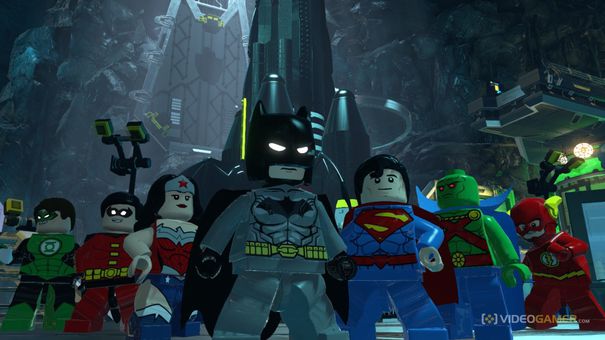
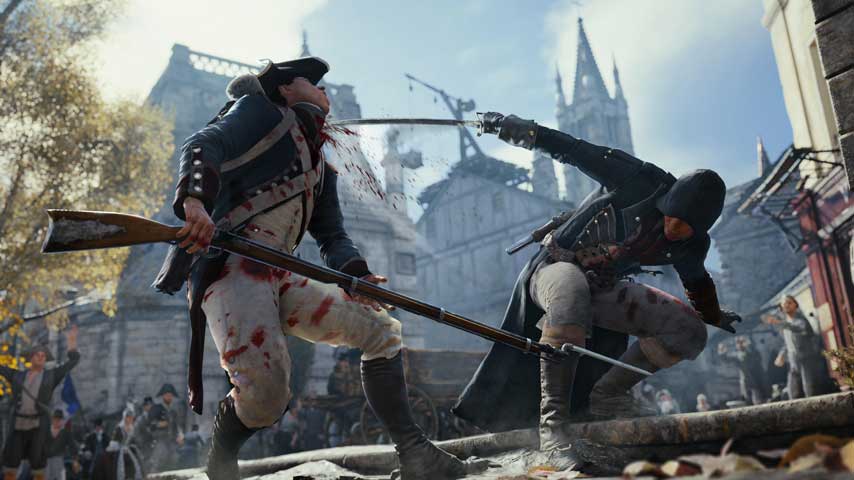
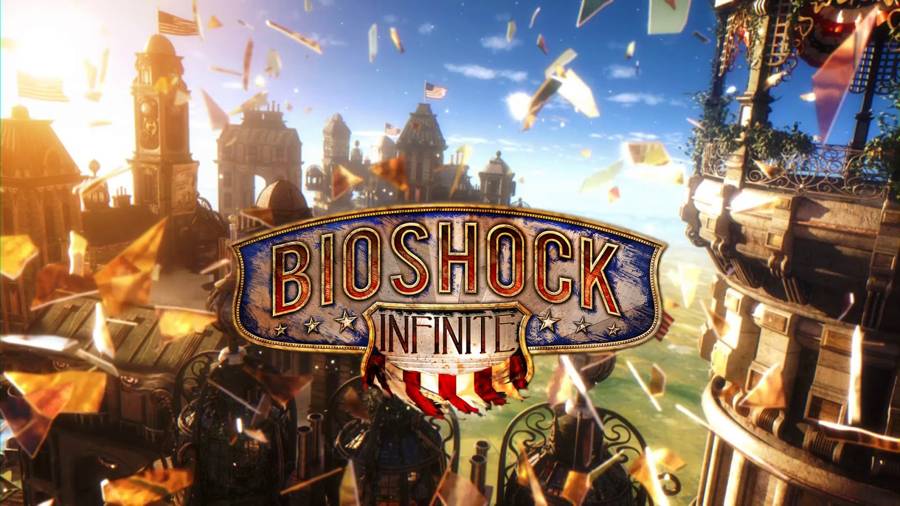
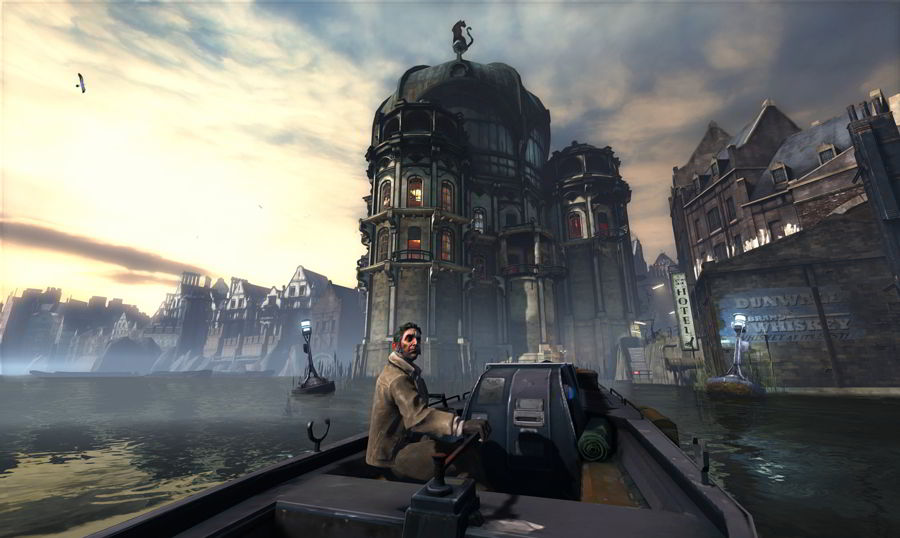
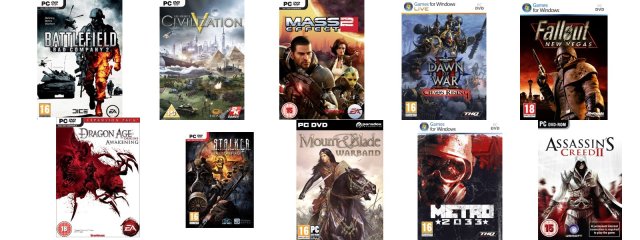 10 of the Best PC Games 2010 - Mana Pools Top PC Games 2010
10 of the Best PC Games 2010 - Mana Pools Top PC Games 2010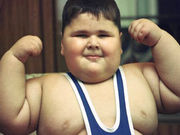 The Week in Review: MMO troubles, first
The Week in Review: MMO troubles, first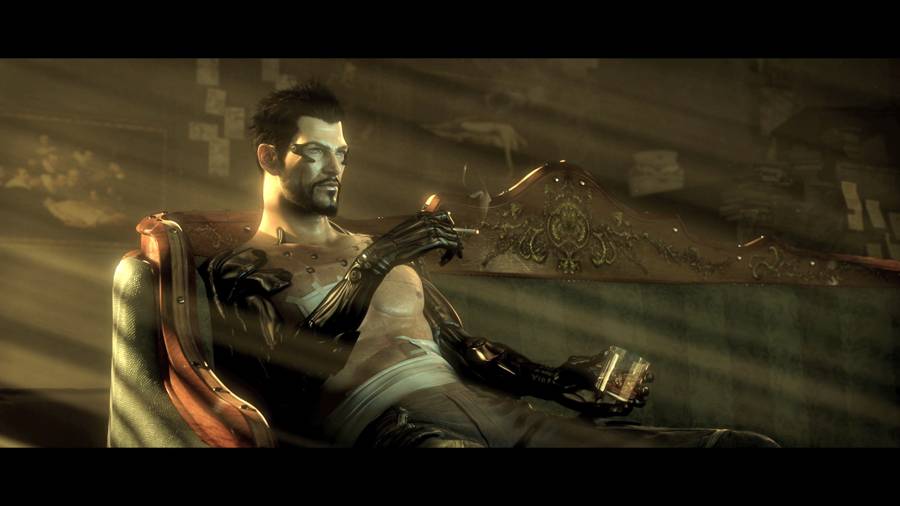 Deus Ex The Human Revolution Panchaea Quest Guide
Deus Ex The Human Revolution Panchaea Quest Guide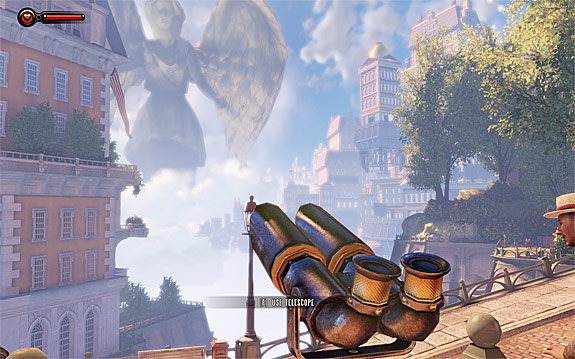 BioShock Infinite Guide - Telescope & Kinetoscope Locations (Sightseer Achievement / Trophy)
BioShock Infinite Guide - Telescope & Kinetoscope Locations (Sightseer Achievement / Trophy) How to make Crysis 3 run Faster with the Best Graphics Possible
How to make Crysis 3 run Faster with the Best Graphics Possible